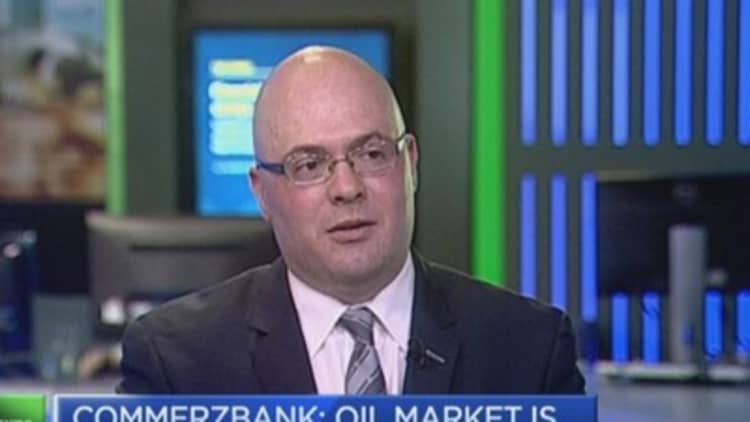Crude oil futures rose on Tuesday on signs of falling U.S. oil production, weakness in the dollar and tensions in the Middle East, particularly Yemen.
U.S. crude settled $1.38, or 2.7 percent, higher at $53.29, surging above its 100-day moving average of $52.96.
Ahead of the May contract's expiration on Wednesday, front-month Brent crude futures were trading up 63 cents at $58.56 a barrel by 2:36 p.m. EDT (1836 GMT), above its $58.40 100-day moving average.
Read MoreSaudis, ETF trend could exacerbate oil drop: Citigroup
North Dakota's February oil production fell 15,000 barrels per day versus January's output, monthly data from the state showed on Tuesday, though the number of producing wells hit a record high.
The North Dakota report arrived a day after the U.S. Energy Information Administration said it expected U.S. shale production to fall by 45,000 bpd to 4.98 million bpd in May, which would be the first monthly decline in four years.



"It's a small change, just a drop in the ocean, but an excuse to buy," said Carsten Fritsch, analyst at Commerzbank.
Shale production has helped boost U.S. output by more than 4 million bpd since 2010, helping cause the stunning price retreat since last June. Reduced output signals that low prices may be hitting production.
Read MoreOPEC slams oil producers with 'go-it-alone' attitudes
The benchmarks' moves this week above their 100-day moving averages, closely watched by market technicians, were the first since July 20014.
The dollar sank after the U.S.Commerce Department released March retail sales data. While they were the strongest in a year, the data came in under expectations, helping lift dollar-denominated oil prices.
On Tuesday, Iranian Oil Minister Bijan Zanganeh was quoted as saying OPEC should cut its target daily production of oil by at least 5 percent, or approximately 1.5 million barrels.
Oil also found support from tensions in the Middle East, where fighting is continuing in Syria, Iraq and Yemen.
While Yemen has produced only around 130,000 bpd of crude in recent months, analysts fear its civil war could destabilize neighboring Saudi Arabia.
Read More
Iran will submit a four-point peace plan for resolving the crisis in Yemen to the United Nations on Wednesday, Iranian television reported.
Saudi Arabian oil minister Ali al-Naimi discussed oil markets on Tuesday with Russia's ambassador to Riyadh Oleg Ozerov.
Traders will eye inventory data on U.S. oil from the American Petroleum Institute due at 4:30 p.m. EDT (2030 GMT) on Tuesday. Crude stocks are expected to have risen last week.

